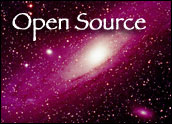
Open source is thriving, with over 1.4 million registered users onSourceForge.net and with startups sprouting around every part of the software stack. The big question is, can companies really make enough money when the software is often downloaded for free?
If Red Hat is any indication, the answer is yes. With projected revenues of about US$300 million this year, the 13-year-old company relies on a subscription model. An annual fee per server buys updates, upgrades, certifications, unlimited incident support throughout the year. For example, if a hardware manufacturer releases a new computer model, Red Hat will certify it at no extra charge.
“The business model is not so much around the code as it’s providing the environment for customers to use the code,” said Nick Carr, enterprise open source marketing manager at Red Hat. “In the Linux and open source software area, it’s pricing Software as a Service rather than as a perpetual license,” said George Weiss, an analyst at Gartner.
The subscription model differs from services in that services fall into a broader category. For example, subscription-based pricing is one type of service. Systems integration is another kind of service, in which multiple open source applications have to work together in a complex system build. Consulting services is a third category.
Specialties for Differentiation
SourceLabs, with a subscription model, provides certification and testing for software glitches. The company focuses on Java development software and the LAMP (Linux, Apache, MySQL, PHP) stack.
One of its competitors,SpikeSource, uses a similar business model. Both companies charge subscription fees. Both differ from Red Hat in that Red Hat certifies its own Linux distribution and no others. SourceLabs and SpikeSource include distributions and operating systems from different vendors.
Red Hat has about 50 percent of the subscription market and will be a $400 million company over the next fiscal year, Weiss said. He estimated that the market for subscription services will be in the $800 million range.
Optaros is a more traditional services company, which provides consulting, application development and systems integration.
The competition is getting so intense that companies are beginning to offer specialties to differentiate themselves. For example,OpenLogic, a distributor of open source software for the enterprise, announced last month that it would indemnify customers against lawsuits regarding intellectual property infringement. The offer covers open source products in its Certified Library except for Linux, and the coverage will be invalidated if the code is modified.
MySQL employs a dual licensing business model. It distributes the database software for free if people agree to distribute any modifications under the General Public License, or the GPL, which is the basic license for a lot of (but not all) open source software.
The other part of the dual licensing agreement covers the MySQL Enterprise edition, which comes with services and support and doesn’t require redistribution. There’s also a new service called “the MySQL Monitoring and Advisor Services,” which will ship in Q4.
In 2005, the company, which employs 300, had close to $40 million in sales, according to CEO Marten Mickos. There are 10 million MySQL users, he estimated, pointing to a German study that shows MySQL has 29 percent of the installed base of the database market.
Qlusters, a systems management application, employs a dual licensing model similar to MySQL, except that some parts of the code are proprietary, according to Weiss. Qlusters Resource Manager falls under a commercial license and ships with support, documentation, consulting services and additional functions, while openQRM is similar to the freely available database software from MySQL.
The Real Open Source Developers
The business model ofOpen-Xchange, an open source online collaboration tool, is”very much a software company business model,” said Dan Kusnetzky, executive vice president of marketing strategy at Open-Xchange. That’s no surprise given its background.
Netline developed the Open-Xchange collaboration software about 10 years ago in Germany and Compaq preinstalled the software, which was based upon Linux and other open source software, as an appliance, and the first three versions were sold in that environment.
When Compaq was acquired by HP, HP wasn’t interested in it because it had its own collaborative solution called OpenMail. Netline worked up an agreement with Suse Linux to create Suse Linux Open-Xchange, version 4. When Novell bought Suse, Open-Xchange sought funding to create a marketing and sales division, and the U.S. company was formed.
The company sells documentation, services, support, training and webinars. There are between 5,000 and 9,000 downloads of the project code per month, depending upon marketing and the activity in the user community, Kusnetzky said.
That user community can often contribute to the bottom line indirectly, executives at open source companies said. “It’s very important not just as a marketing tool, but also as a place to get ideas on what people really need,” said Kusnetzky. “It can cost $200,000 to $300,000 just to execute a worldwide survey to find out what people want,” he noted. Kusnetzky, formerly an analyst at IDC, pointed out that he can get the same information by going directly to the open source community.
The developer community also can cut costs and boost sales by porting applications to different platforms. One thing is changing with the increasing acceptance of open source in the enterprise, or maybe it’s just a perception: “There’s a tendency to think of the community as being entirely volunteers somehow working for free in their basements, but invariably they’re in government or research,” said Red Hat’s Carr.
“For the commercial products, such as Red Hat Enterprise Linux, where the customer base is Wall Street or wherever, the large majority of development is done by commercial IT companies,” he remarked.












































